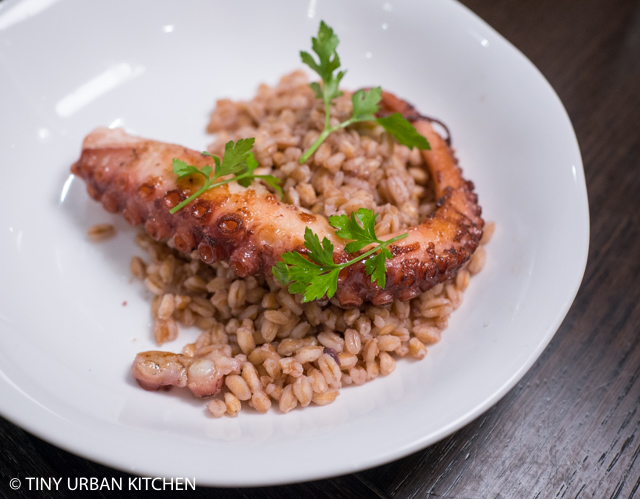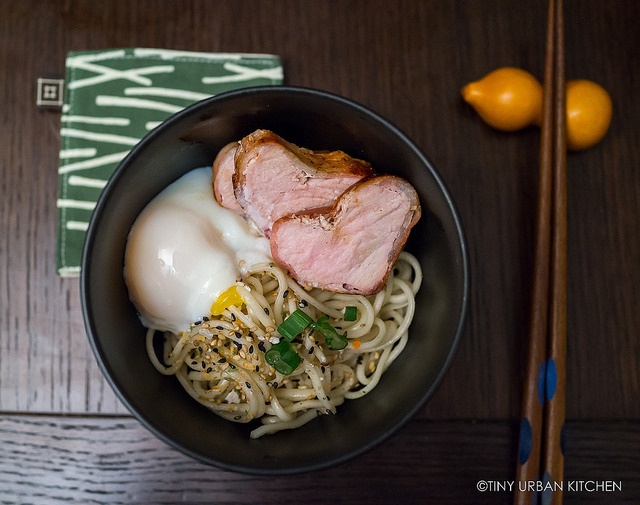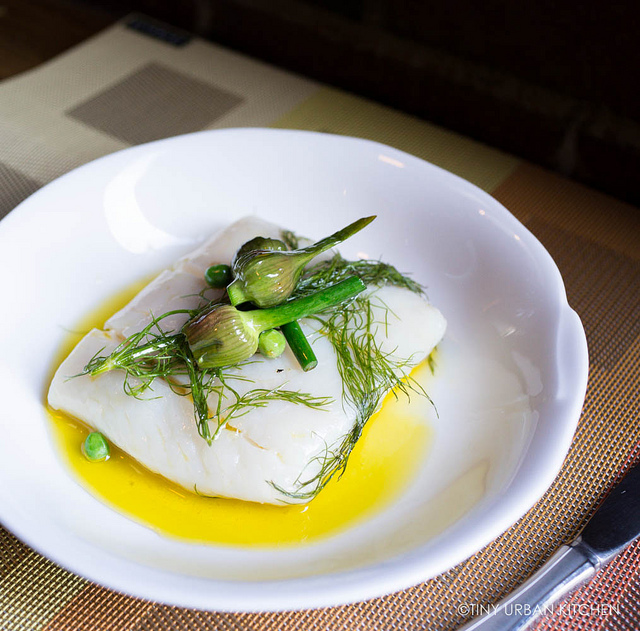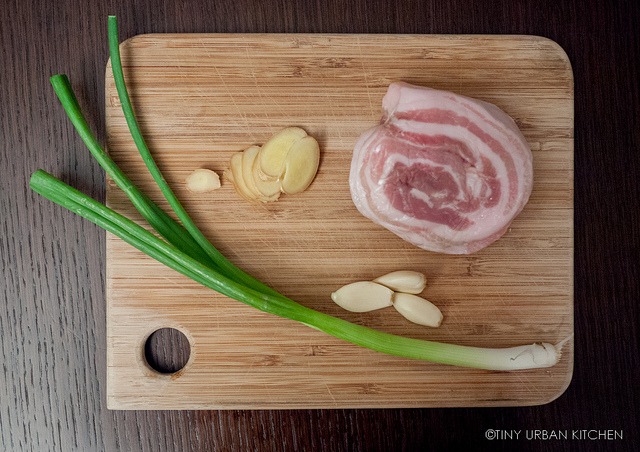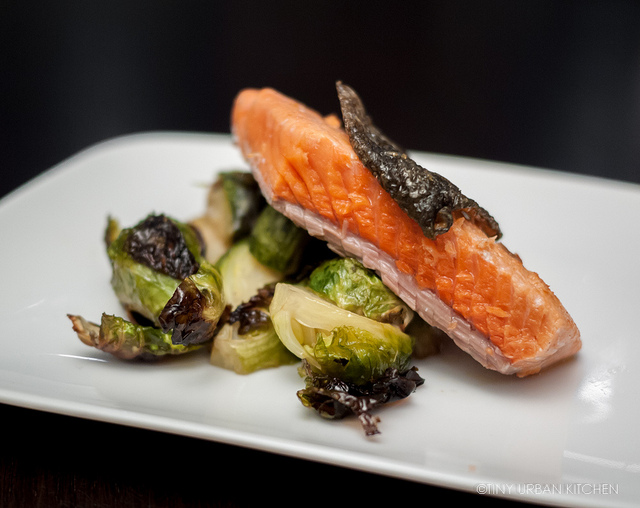
I got into the sous vide game early. Back before all the fancy elegant wands there was this workhorse called the Sous Vide Supreme. It was a HUGE box of a machine, but it did kept water temperature consistent. I played around with it so much, trying to make all sorts of fun sous vide dishes.
After moving to Hong Kong, I went for almost two years without sous vide before finally breaking down one day and asking Bryan to pick one up at the super market near his work.
Since then I've been revisiting sous vide. I realized that I never published this post I worked on years ago. The content is still good and I picked it back up just last week while making one of my first batches of sous vide salmon in Hong Kong.
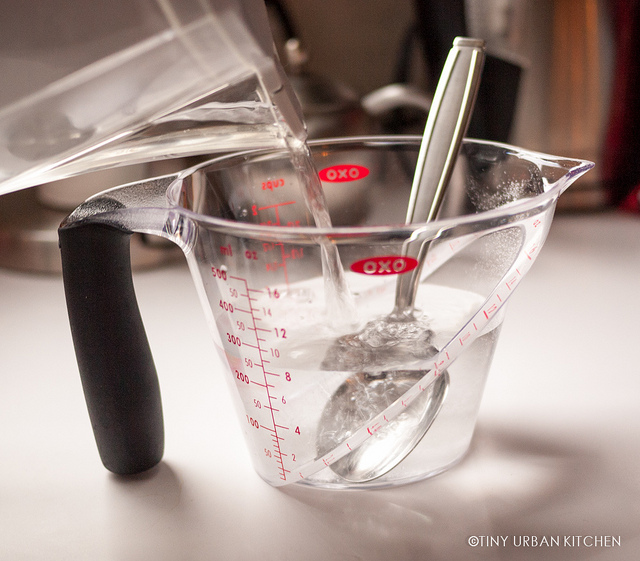
Most recipe books recommend brining or at least salting salmon for some time to improve its texture.
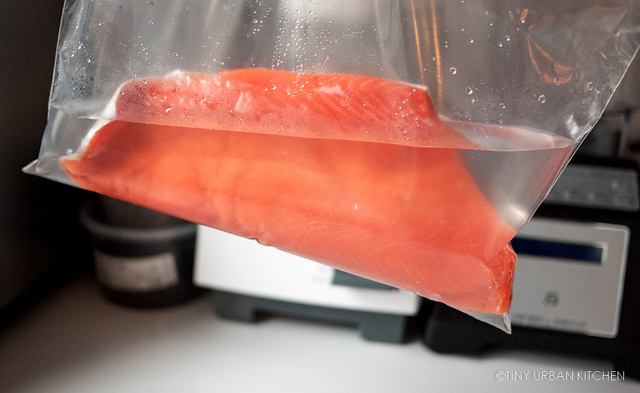
Kenji Lopez-Alt recommends brining for 30 minutes before cooking. These days, I often skip the brining step and the salmon still turns out fine. I usually salt it on both sides before putting it into the bag.
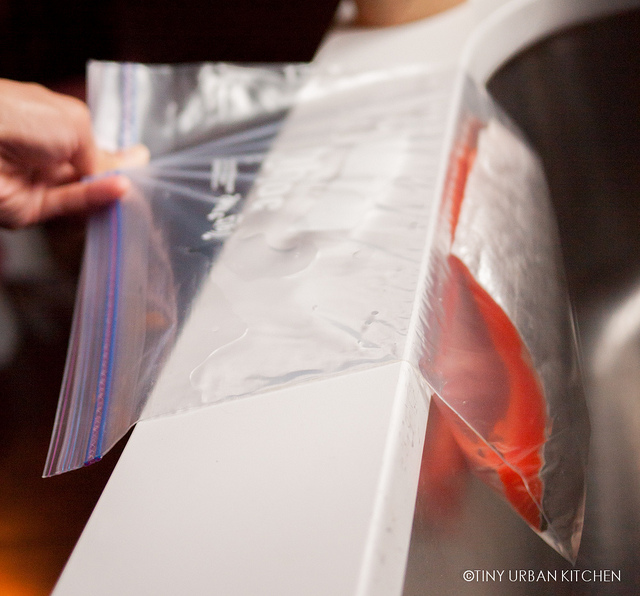
The nice thing about sous vide salmon is that you don't need a vacuum sealer. Because the fish is not cooked for too long, a simple zipper bag works fine.
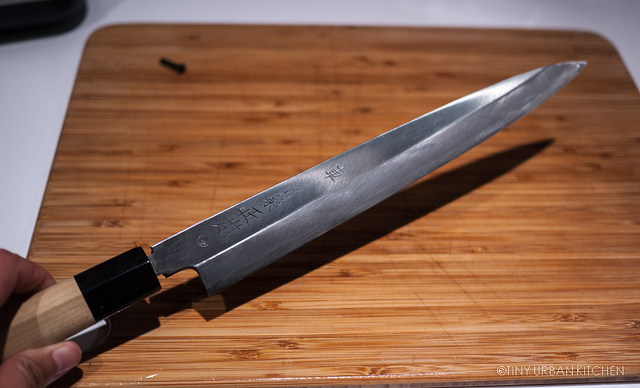
It's rare that I take out my super special sushi cutting knife that I bought at Tsukiji Fish Market almost ten years ago (sniff sniff, R.I.P.).
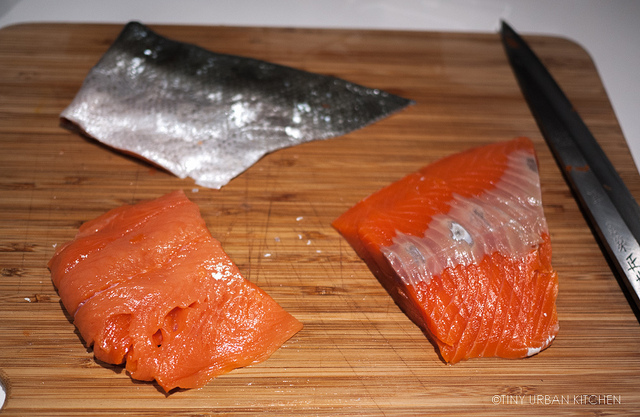
Because the skin becomes soggy when sous vide, it's best to remove the skin and pan fry it separately into a lovely, crispy top. If you forget to remove it before sous vide-ing, you can also remove it afterwards and fry it then.

I do have a Foodsaver vacuum sealer [affiliate link!], so typically I still use it. I like to add a bit of olive oil, sort of like making an olive oil poached salmon.
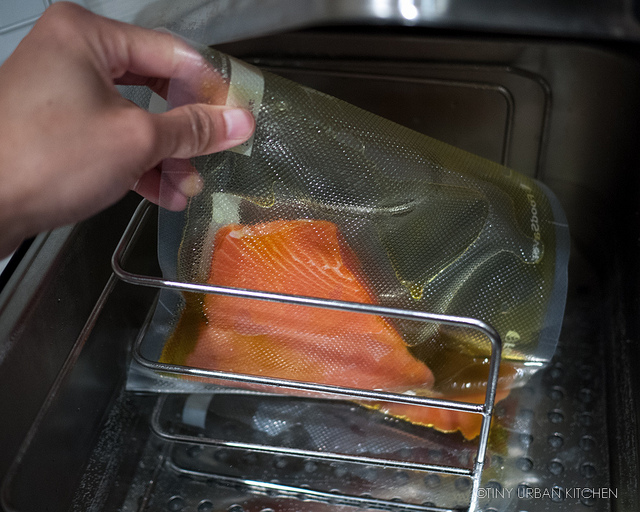
Sous vide at 47 degrees C / 117 degrees F for 15 minutes. This results in a fish texture that isn't quite raw (like sashimi), but is still super soft and slightly translucent.
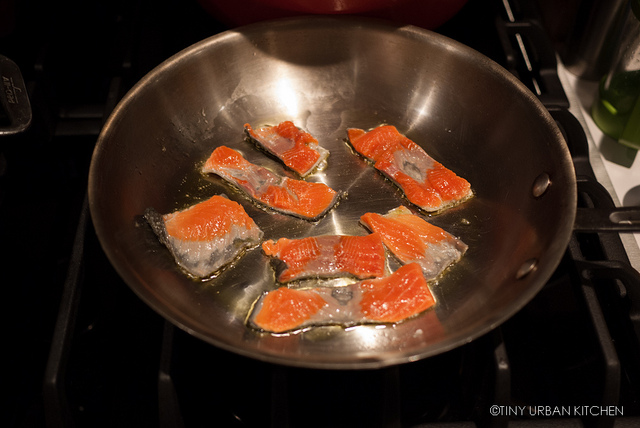
While you're waiting, pan sear the skins.
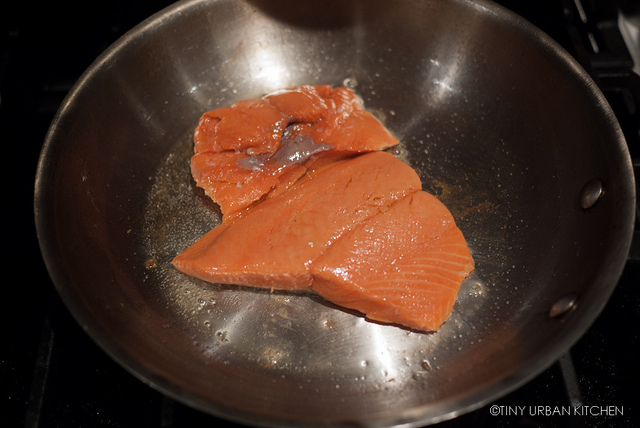
Alternatively, you can sear the skin after you sous vide. Both work fine.

Serve!
I like using sous vide if I am cooking a thicker piece of salmon. Sous vide allows me to cook the entire piece of fish very evenly at a nice, almost rare texture. If I am cooking a thinner piece, or a belly piece (which is pretty fatty and almost impossible to over cook), I may not necessary use sous vide since it still takes a bit more effort.
I find sous vide especially handy when I am entertaining or cooking a lot of different dishes at the same time, since I can afford to keep the bag in the water bath a bit longer without overcooking it.
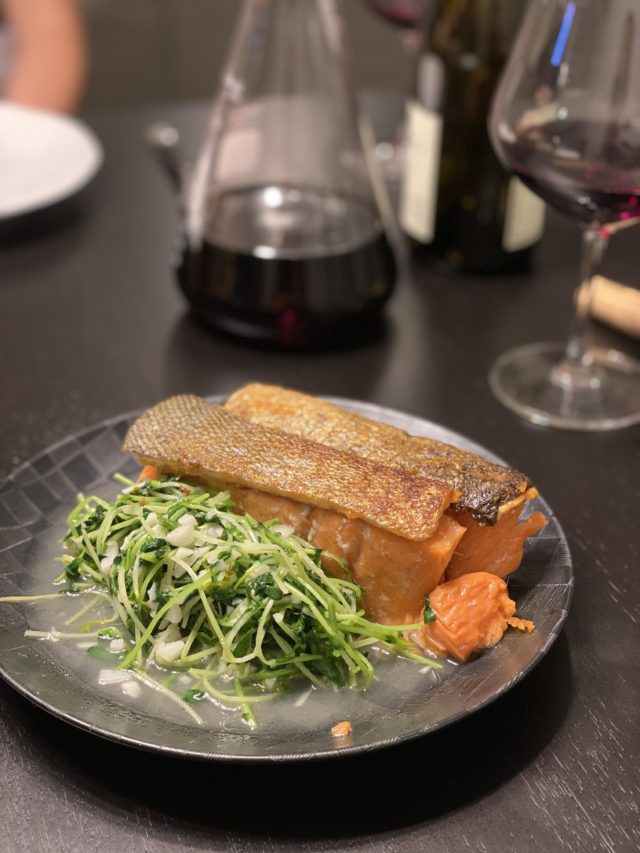
I've only had my new sous vide cooker in Hong Kong for less than a year, but I've used it immensely this year. OK, perhaps due to the pandemic I've been cooking A LOT more than I typically wouldn't, but still, I am amazed at how I was able to go almost two years without a sous vide wand. Now I can't imagine cooking without one.
Below are some links to some popular and highly rated sous vide cookers and also the FoodSaver that I am currently using. Personally, I picked up a local one in Hong Kong (called HRC) at City'Super, and it seems to work fine. If I were in the US, I would have probably picked one of the ones below.
The FoodSaver shown below is exactly the one I own now. It works fine, though I have in general found that FoodSaver vacuum sealers don't last a long time. I'm already on my third one in about a decade. They work fine for their intended purpose for several years, but eventually they need to be replaced.




